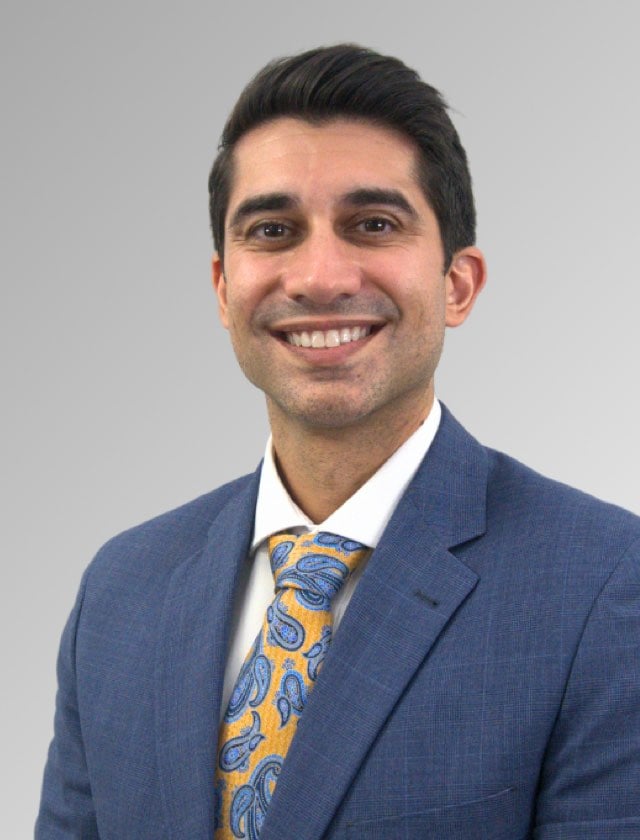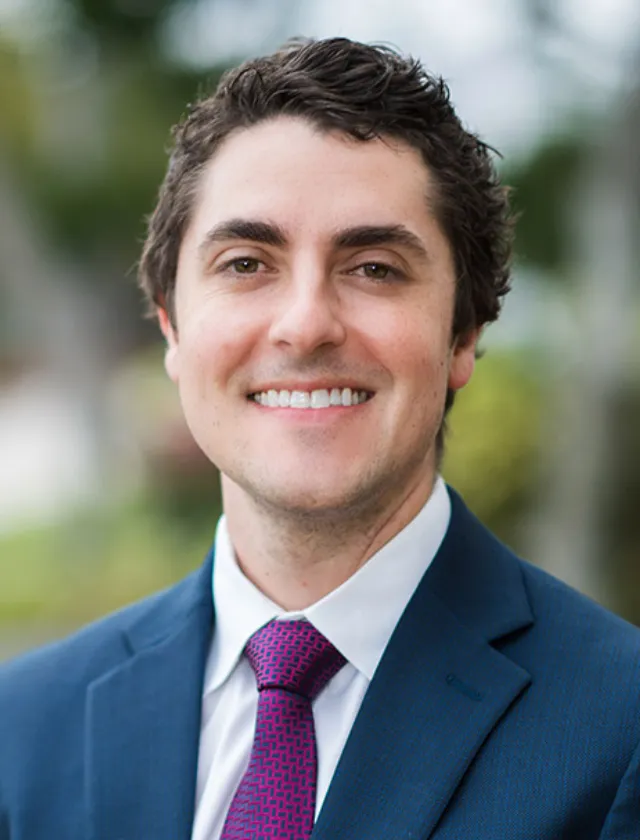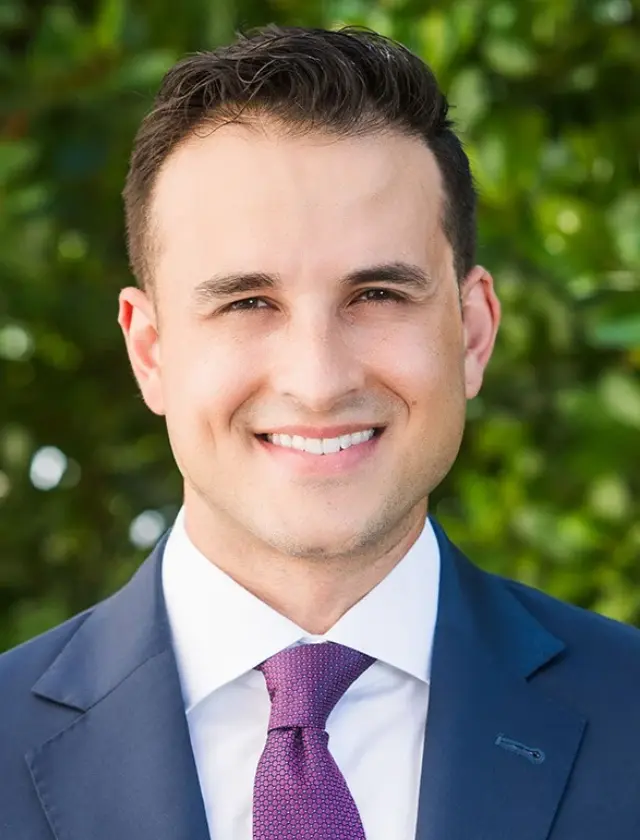-banner.jpg?width=1156&height=650&name=Facial%20Nerve%20Disorders%20(T2)-banner.jpg)
Expert Surgery for Facial Nerve Disorders in Florida
—Restoring Movement and Expression
-banner.jpg?width=1156&height=650&name=Facial%20Nerve%20Disorders%20(T2)-banner.jpg)
What Causes Facial Nerve Disorders?
- Bell’s Palsy
- Facial Paralysis
- Facial Nerve Injury
- Hemifacial Spasm
- Moebius Syndrome
- Synkinesis
Watch The Video to Learn More
Check Your Symptoms: Are You Experiencing Any of the Following?
- Uneven smile or drooping facial muscles
- Difficulty blinking or closing one eye
- Uncontrolled twitching or facial spasms
- Involuntary movements during facial expressions (synkinesis)
- Eye dryness, speech changes, or social discomfort
If you said yes to any of the above, you may be a candidate for facial reanimation surgery.
What is Facial Reanimation Surgery?
Transfers nerve signals from the healthy side of the face to the paralyzed side using a donor nerve. Often combined with muscle transfer for dynamic facial movement. Ideal for long-term or congenital paralysis.
Microsurgical procedure using a thigh muscle to recreate smile function. Especially effective in patients with longstanding facial paralysis or Moebius Syndrome. Most patients see strong, natural movement return over time.
Uses your own chewing muscle (temporalis) to help restore facial expression. A reliable option when nerves are no longer repairable—often provides faster results with fewer stages.
Reattaches or decompresses injured facial nerves. Best suited for early-stage trauma or surgical injuries. Can restore voluntary movement when performed within months of injury.
What Are the Benefits of Facial Nerve Surgery?
Am I a Candidate for Facial Reanimation Surgery?
If you’ve been told there are no more treatment options—or it’s been over a year since your diagnosis—you may still be a candidate. At The Institute of Florida, we specialize in facial reanimation procedures for patients with complex or long-standing paralysis, including cases once considered untreatable. Our team evaluates each case individually to determine the most effective path forward.
You may be a strong candidate if you have:
- Bell’s Palsy that hasn’t improved after 3+ months
- Facial paralysis following trauma or surgery
- Involuntary facial movements (synkinesis) after partial recovery
- Lifelong or long-standing facial paralysis, including congenital cases


Why Are Facial Nerve Disorders Often Misdiagnosed?
Facial nerve disorders can be challenging to diagnose—especially in the early stages. Many patients are initially told their symptoms will resolve on their own, particularly in cases of Bell’s palsy. Others may be referred across multiple specialties without answers, as symptoms like facial tightness, asymmetry, or involuntary movement are often misattributed to non-neurologic causes.
While early intervention is ideal, surgical solutions may still be effective months or even years later. We support both patients and referring providers by offering specialized evaluations, diagnostic clarity, and advanced facial reanimation procedures—many of which are not widely available—right here in Florida.

Considering Facial Reanimation Surgery? What To Expect:
Precision Diagnostics
Your evaluation starts with a careful look at how your face moves—using photos, simple movement tests, and a review of your medical history. We’ll also use advanced tools like MRI scans and EMG testing to understand how well your facial muscles and nerves are working. This helps us build a surgical plan that fits your exact condition and timeline.Tailored Surgery
Surgical options depend on how long the paralysis has been present and whether any nerve function remains. In acute cases, direct nerve repair may be possible within hours of injury. For patients within 12–24 months, nerve grafting or transfers can often restore voluntary movement. In long-standing or congenital cases, techniques like muscle transposition or free muscle transfer are used to recreate natural expression. Every treatment plan is personalized based on your anatomy, symptoms, and goals—whether that’s regaining a spontaneous smile, improving eye closure, or restoring facial balance.Rapid Recovery
Most surgeries are outpatient or require brief observation. Early improvements may begin within weeks, but full functional gains typically appear over 6–12 months. Ongoing therapy (e.g., facial retraining, speech support) may be recommended as part of your long-term recovery.Why Trust The Institute of Florida

Nation-Leading Experience in Facial Reanimation Surgery
We’ve treated over 400 patients with complex facial paralysis—including challenging cases of Bell’s palsy, post-surgical injuries, and rare congenital conditions like Moebius Syndrome. Many of our patients come to us after exhausting other options elsewhere.
Every Proven Reanimation Technique, in One Place
From cross-facial nerve grafting and gracilis free muscle transfer to neurolysis and temporalis muscle transposition, we offer the full spectrum of facial reanimation procedures. Each plan is tailored to your unique anatomy, timeline, and goals—whether the injury is recent or decades old.
Advanced Diagnostics to Guide Precision Surgery
Accurate diagnosis drives successful outcomes. Our team uses electromyography (EMG), dynamic MRI, and expert facial grading systems to evaluate nerve and muscle viability—ensuring every surgical plan is built on clear, objective data.
Meet Florida’s Top Nerve Surgery Experts
There’s Still Time to Restore Movement. Let’s Rebuild Your Smile
If you’ve been told there’s nothing more to do, let us take another look. Our Florida nerve specialists are here to evaluate your case and help you move forward—with clarity and confidence.
Now seeing patients in Ft. Lauderdale and Boynton Beach.
Frequently Asked Questions
Yes. Long-standing facial paralysis can often be treated with procedures like gracilis muscle transfer or temporalis muscle transposition. These approaches are designed for cases where the native nerve is no longer viable.
Most facial reanimation procedures are performed under general anesthesia, with minimal post-operative discomfort. Many are outpatient, and recovery is well tolerated with standard pain management.
In most cases, scarring is minimal. Our surgeons use advanced microsurgical techniques and place incisions in natural skin creases when possible to keep scars discreet. Over time, most patients find scars fade significantly.
For many people, Bell’s palsy improves over time—often within 3 to 6 months. However, if symptoms persist beyond that point or worsen, it may signal long-term nerve damage. Early evaluation can help determine if additional treatment is needed.
Bell’s palsy is one of the most common causes of facial paralysis, typically caused by temporary inflammation of the facial nerve. “Facial paralysis” is a broader term that includes other causes like trauma, surgery, stroke, or congenital conditions.
Synkinesis—unintended facial movements during normal expressions—may become more noticeable as the nerve recovers incorrectly. While it doesn’t usually worsen on its own, it often doesn’t improve without treatment. Surgical and physical therapy options are available to reduce symptoms.
Not necessarily. While early intervention offers the best outcomes, many patients benefit from surgery even months or years after their initial diagnosis. Our team specializes in long-standing and previously untreated cases.




.webp)


